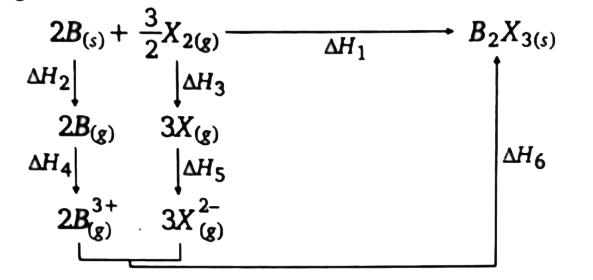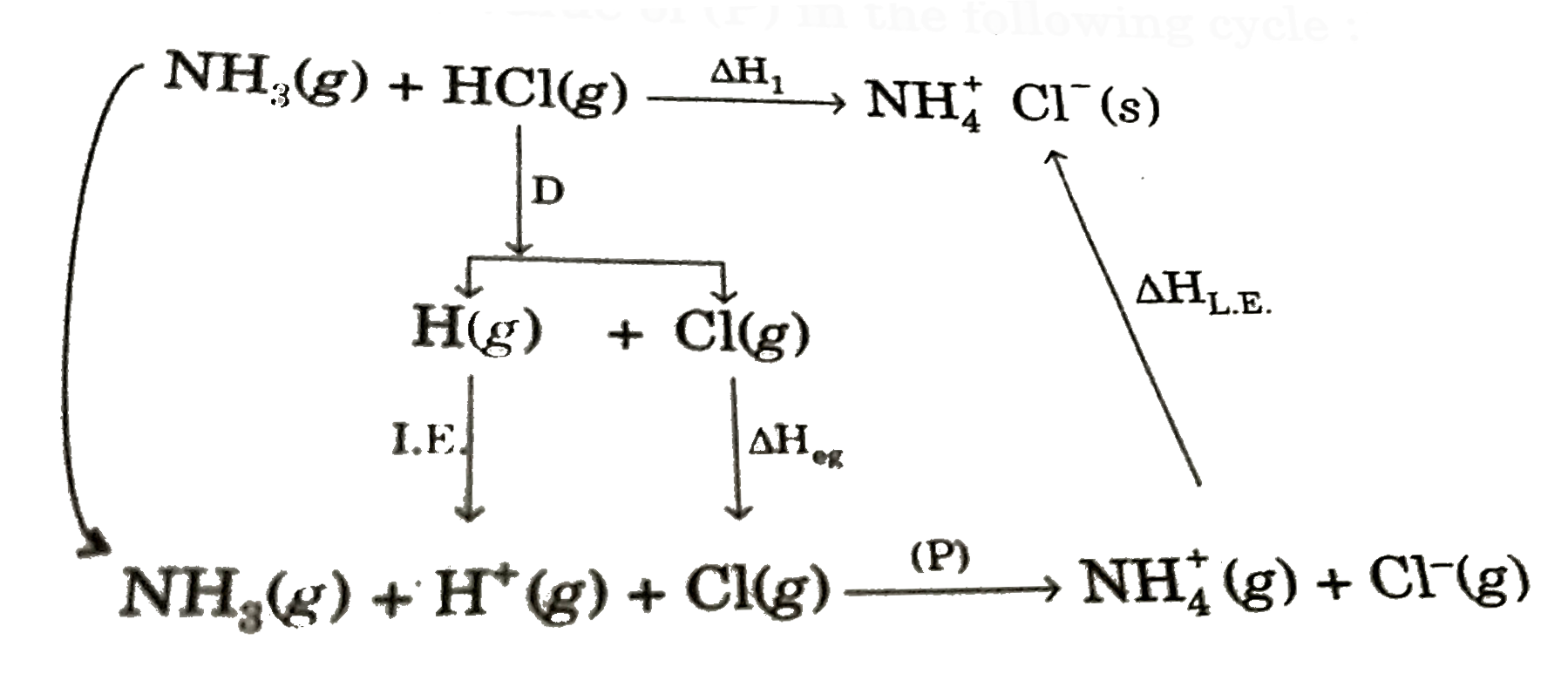Consider the following process :-
A→2B,ΔH=+150KJ
3B→2C+D,ΔH=+350KJ
G+A→2D,ΔH=+350KJ
For B+D→G+2C,ΔH will be
+525KJ
+325KJ
−175KJ
−325KJ
The correct Answer is:D
(4)=(1)+(2)−(3)
ΔH=150+(−125)−350=−325KJ
Topper's Solved these Questions
- CHEMISTRY AT A GLANCEBOOK - ALLENCHAPTER - CHEMISTRY AT A GLANCEEXERCISE - INORGANIC CHEMISTRY
300 Videos
- CHEMISTRY AT A GLANCEBOOK - ALLENCHAPTER - CHEMISTRY AT A GLANCEEXERCISE - ORGANIC CHEMISTRY
483 Videos
- Chemical EquilibriumBOOK - ALLENCHAPTER - Chemical EquilibriumEXERCISE - All Questions
24 Videos
- ELECTROCHEMISTRYBOOK - ALLENCHAPTER - ELECTROCHEMISTRYEXERCISE - EXERCISE -05 [B]
38 Videos
Similar Questions
Knowledge Check
Consider the following process?
ΔH(kJ/mol)
1/2A→ +150
3B→2C+D −125
E+A→2D +350
For B+D→E+2C, ΔE will beA525 kJ/molB−175kJ/molC−325kJ/molD325kJ/molConsider the following processes :-
ΔH(kJ/mol)12A→B+1503B→2C+D−125E+A→2D+350For B+D→E+2C,ΔH will beA−325kJ/molB325kJ/molC525kJ/molD−175kJ/molGiven these reactions :
A→2BΔH=40KJ
B→CΔH=−50KJ
2C→DΔH=−20KJ
Calculate ΔH for the reaction : D+A→4CA−100KJB−60KJC−40KJD100Kj
Consider the following processes :-
ΔH(kJ/mol)12A→B+1503B→2C+D−125E+A→2D+350For B+D→E+2C,ΔH will be
View SolutionConsider the following Born-Haber's cycle:

(Where ΔH1,ΔH2,ΔH3,ΔH4,ΔH5andΔH6 are in kJ/mol)
Then according to given information the correct statement is/are:
View SolutionFind out the value of (P) in the following cycle:

Given ΔH1=−400kJ,I.E.=+50kJ,D=+50kJ,ΔHeg=−30kJ lattice energy −−100kJ
View SolutionChoose the most appropriate options.
For the reactions C+O2→CO2,ΔH=−393KJ
2Zn+O2→2ZnO,ΔH=−412KJ
the correct statement is
View SolutionA gaseous mixture of propane, acetylene and CO2 is burnt in excess of air. Total 4800 KJ heat is evolved . The volume of CO2 formed during combustion is 224 liters at STP.
The total evolved heat is used to perform two separate process:
(i) Vapourising 87.5% of water (liquid) obtained in the process of burning the original mixture.
(ii) Forming 3808 litres ethylene measured at STP from its elements.
ΔHH−H=435KJ/mol ΔHC−H=416KJ/mol ΔHC−C=347KJ/mol
ΔHC−C=615KJ/mol, ΔHC−C=812KJ/mol ΔHsublimationof (C,s)=718KJ/mol
ΔH∘f(C2g)=−394KJ/mol ΔH∘f(H2O,l)=−286KJ/mol. ΔH∘f(H2O,g)=−247KJ/mol.
ΔH∘r×nforC2H2(g)+H2g→C2H4(g)
View Solution
